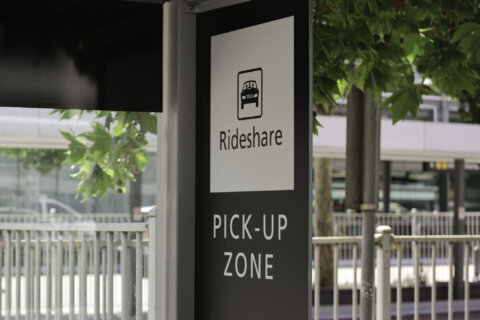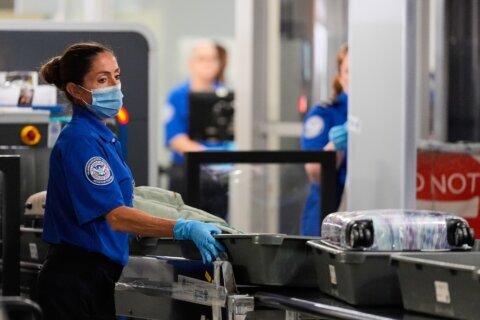The number of people flying on commercial flights has dropped to the lowest level since the 1950s, and when passengers resume getting on planes in larger numbers, the experience will be fundamentally different than it was just a few months ago.
Major airlines recently began requiring passengers to wear masks, and are spacing people out as much as possible on planes, to try to avoid spreading the coronavirus.
Witnesses who testified before the Senate Committee on Commerce, Science and Transportation on Wednesday said many more challenging — and potentially costly — changes are coming for airports and the airline industry.
Todd Hauptli, president and CEO of the American Association of Airport Executives, said the $25 billion relief congress has already approved to help the industry has helped. But he said billions of additional dollars will likely be needed to adapt to the pandemic.
“People aren’t going to want to put their fingerprints down on things … they’re going to want to be able to check-in, in a different fashion,” he said. “They’re going to need standoff detection equipment.”
(Standoff detection is the term when security agents use enhanced imaging to screen people for illegal items. In this case, it might be used for scanning body temperature.)
Speaking in a spacious hearing room set up for social distancing, Hauptli reminded senators that they will experience changes themselves as people who often fly to and from their home states to D.C.
“It will be a different travel experience for all of you in the future,” he said.
The airline industry has been devastated by the pandemic, with passenger volume falling more than 95%, to its lowest level since before the jet age started to take off in the 1950s, said Nicholas Calio, president and CEO of the trade group Airlines for America.
Even with major reductions in U.S. flights, Calio said the average plane now carries just 17 passengers on domestic flights and 29 on international flights. Some lawmakers flying back to D.C. have said they have been the only passenger on a plane, or one of just a handful.
“The duration and breadth of the impacts directly on our industry, compounded by the larger impacts on the economy, leave no doubt that the U.S. airline industry will emerge a shadow of what it was on March 1 of this year,” Calio said.
Calio said it took three years for the industry to fully recover after 9/11, more than twice that after the Great Recession of more than a decade ago — and this could take even longer.
While dealing with the economic challenges, Calio said the airlines are trying to alter boarding procedures and implement safety measures.
Some recent flights received a lot of attention on social media, when passengers raised questions about how people were crowded on planes, without masks.
During Wednesday’s hearing, some senators pressed the witnesses on other issues, including how the airlines have handled canceled flights.
Sen. Richard Blumenthal, (D-Connecticut) noted media reports and complaints from constituents about confusion related to whether people could get refunds, or whether they had to get vouchers for flights that were canceled.
“In effect you are, forgive me, screwing the very taxpayers whose money is going into your pockets,” Blumenthal said.
Calio said the airlines are trying to be fair to customers during trying times for everyone. “For all of our members right now, refunds are exceeding revenues,” he said.
Overall, the airline industry is estimated to be losing close to $10 billion a month.
- Sign up for WTOP alerts
- Latest coronavirus test results in DC, Maryland and Virginia
- Coronavirus FAQ: What you need to know
- Coronavirus resources: Get and give help in DC, Maryland and Virginia
- Coronavirus update: DC tourism revenue nose-dives amid pandemic
- Reopening to tourists: DC’s advantages and disadvantages
- Workers want virus protections before casinos reopen
- Rehoboth Beach’s mayor reacts to Ocean City beach reopening







